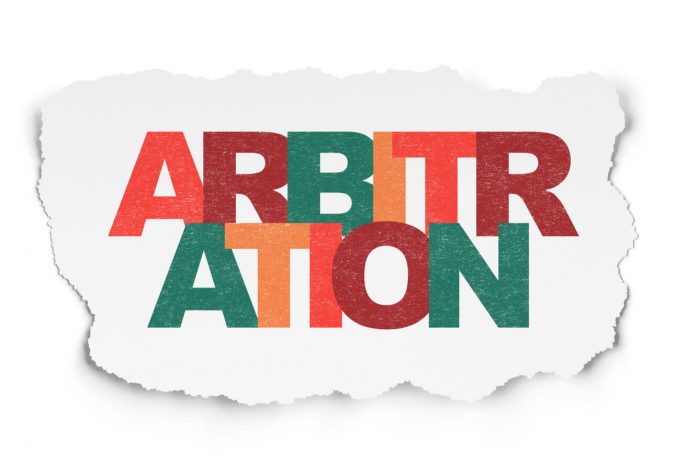This article has been written by Palak Nangru, pursuing a Certificate Course in Arbitration: Strategy, Procedure and Drafting from LawSikho.
Table of Contents
Introduction
The Statement of Claim and the Statement of Defence are the primary filings of the arbitration proceedings. The Claimant submits a ‘Statement of Claims’ (SoC) before the arbitral tribunal. Through the SoC, the Claimant provides the facts supporting his claims, the points of issues, and the reliefs sought. On the other hand, the Respondent submits a ‘Statement of Defence’ (SoD) to the arbitral tribunal, that provides his defence and other information to rebut the claim raised by the Claimant. Section 23 of the Arbitration and Conciliation Act, 1996 provides that Statement Claim and Defence must provide all facts, relevant reliefs, and documentary evidence.
The importance of the SoC and SoD is highlighted in Section 25 of the Arbitration and Conciliation Act, 1996. As per the Section, in case the claimant fails to render his SoC, then the arbitral tribunal can terminate the entire arbitration proceedings. Whereas, Section 25(2) provides the arbitral tribunals the authority to continue their proceedings if the respondent fails to provide his SoD. This Section also provides the arbitral tribunal the discretion to consider the failure of the respondent to submit the SoD as a forfeiture or waiver of their right. Thus, if either of the parties fails to submit their Statement of Claim or Defence it would have an adverse impact on their position before the arbitral tribunal.
The Statements submitted by both parties form the basis of the arguments advanced by them. Therefore, the parties need to draft their statements properly. The following article aims to discuss how a Statement of Defence should be drafted and provide certain points that might come in handy while drafting the statement.
What is a Statement of Defence?
The Statement of Defence is one of the primary documents of the arbitration proceedings in which the respondents reply and counter to all the grounds raised by the Claimants in the SoC, and explain all the reasons in detail. Further, the Respondent may also raise objections regarding the jurisdiction of the arbitral tribunal in the Statement of Defence.
By the virtue of Section 23(4), the parties have to submit their statements within six months from the date the arbitrators received notice regarding their appointment. However, this rule may vary as certain arbitral institutions provide different time limits within which the Statement of Defence is to be filed by the Respondent. For instance, Article 42(a) of the WIPO Centre required the Respondent to submit the Statement of Defence within 30 days from the filing of the Statement of Claim.
How to draft a Statement of Defence?
There is no particular method or format that must be followed while drafting the Statement of Defence. However, the following elements should ideally be included in the Statement of Defence to ensure that statement of defence is comprehensive:
Facts
The Respondent must provide all the facts related to the dispute in the SoD. It is important to remember that facts cannot be changed after the submission of the SoD, hence, all the aspects of the communications, intent, and evidence with regards to the dispute have to be adequately provided in the statement.
Additionally, it is important to keep in mind that the facts and the chains of events provided in the SoD must be from the perspective of the Respondents and the differences between the facts provided by the claimants in their SoC may also be highlighted.
Jurisdiction
In certain circumstances, the terms of the reference to arbitration are beyond the bracket of disputes that the parties have agreed to submit through arbitration. In such situations, it is essential that the Respondent raises a challenge to the jurisdiction at the earliest and that the same is entered into record. This has to be done to ensure that if the need arises the same grounds can be utilized at the stage of challenging the award passed by the tribunal.
Thus, it would be within the best interests of the parties to raise an objection related to the jurisdiction of the arbitral tribunal in the Statement of Defence itself.
Presents an adequate defence
The primary objective of a Statement of Defence is to allow the Respondent an opportunity to challenge the assertions made by the claimants and defend their action. Thus, the Respondent has to substantiate his position by highlighting the terms of the agreement between the parties which legitimize the actions taken by the Respondents. Additionally, the SoD must also provide all the facts and terms of the agreement which would help establish that the Claimant is not entitled to the reliefs claimed.
Reliefs Sought
The Respondent may also claim reliefs related to the preliminary aspect of the dispute resolution in their SoD.
Appropriate documents
The Respondent must provide the documents supporting the contentions raised by the parties in the Statement of Defence. Thus, all the supporting documents must be annexed and referred to in the relevant submission of facts.
Important points to be kept in mind while drafting a Statement of Defence
The Statement of Defence plays an important role in framing the arguments provided by Respondent in arbitral proceedings. Thus, it becomes important that the Counsel for the Respondent keep in mind the following do’s and don’ts while framing the Statement of Defence:
Deal with all the legal and factual issues raised by the claimant
The Respondent must provide clarification for every issue raised by the Claimant along with any documentary evidence to support the same. All the allegations and points raised by the Claimant must be addressed and nothing must be left. Generally, allegations that are not addressed in the SoD are considered as admissions. Thus, it would be preferred if the Respondent gives a paragraph-wise reply to the Statement of Claim so that the drafter does not forget the points that need to be rebutted and emphasized.
The Statement of Defence must be to the point
Generally, in situations where the Statement of Defence is evasive and not to the point, the arbitral tribunal draws an adverse inference to the points that are not clarified properly by the Respondent. Hence, while framing the Statement it is important to ensure to provide a definite Statement of Defence.
Provide facts from the perspective of the respondents
In a large number of arbitral proceedings, the Respondents provide the same facts as the Claimants in their Statement of Defence. However, this practice may have an adverse impact on the validity of the defence of the Respondent. Hence, the Respondent must provide the facts that led to the dispute from their perspective. Additionally, providing the details of the facts chronologically would provide clarity to the facts presented.
Justify the respondent’s position
The purpose of the Statement of Defence is not just to clarify or defend the claims that have been laid down by the Claimant through the Statement of Claim, it must also justify the action taken by the Respondents. Thus, the Statement of Defence mustn’t just provide explanations to the allegations raised by the Claimants but also substantiates those explanations with relevant facts and provides justification for their behaviour. Thus, the Statement of Defence must include adequate case laws, statutory provisions, and the provisions of the contract between the parties, to support the arguments made and the reliefs sought.
Follow the chronological order maintained in the Statement of Claim
There is more clarity if both the issues and arguments of statements of both the parties are in the same chronological order as there is no need to go back and forth on the issues in dispute. This can be especially helpful to the arbitral tribunal and the parties in showing documents and presenting arguments during the oral hearings in case of complicated and long-running disputes.
Seek appropriate reliefs
Reliefs that arise out of the preliminary aspect of the dispute may be included in the Statement of Defence. These reliefs must be appropriately communicated and substantiated in the Statement of defence.
Requirements of the arbitral institution
While there is no particular format that has to be followed while drafting a Statement of Defence, the rules of certain arbitral institutions provide some particulars that have to be incorporated in the Statements of Defence. Hence, in case of institutional arbitration, the SoD must be drafted as per the rules of the institution.
Attach all evidential documents
For all the assertions raised by the Respondent in their Statement, they must attach all the documents to support their assertions. Ideally, all the facts must be proven with an annexure supporting the same. These documents provide immense support in establishing the innocence of the Respondent in the dispute. Additionally, these documents should be attached in the Statement of Defence as per the order they appear in the Statement.
Counterclaims
It is important to keep in mind that the Respondent must not raise any counterclaims of his own in the Statement of Defence. The procedure to be followed by the Respondent while raising claims to rebut the allegations made against them primarily depends on the procedure adopted by the parties and the arbitral tribunal. In certain circumstances, the arbitral tribunal may allow the Respondent to file the counterclaims with the Statement of Defence. However, in technical and complex matters, the arbitral tribunal generally asks for the counterclaim to be filed separately.
Amendments to the Statement of Defence
If under any circumstances the Respondent has to make certain changes in the Statement of Defence, they may do so under Section 23(3) of the Arbitration and Conciliation Act, 1996. The Respondent may be allowed to make amendments; however, the following limitations would be placed on their freedom to do so:
- The parties have not imposed any restriction on themselves in regards to the amendment of the statements;
- The amendment can only be made if the arbitral proceedings are ongoing;
- The arbitrator would have the discretion to admit or refuse the amendment to the Statement of Defence;
- The amendment may be allowed by the arbitral tribunal if the request for such amendment/ supplementing has been made without any reasonable delay; and
- The amendment may be rejected if they fall within the purview of the arbitration agreement and can be made without manifest and grave justice to the other side.
Conclusion
The Respondent can provide his point of view concerning the dispute and state the facts supporting their claim through their Statement of Defence. Further, in their SoD, the respondents can provide a proper justification for their actions and give the remedy that is sought by them. Thus, the Statement of Defence plays an important role in establishing the defence of the Respondent. Considering the importance of the Statement of Defence it becomes essential that this statement is drafted adequately, as any failure in including the essential components, like the facts from the Respondent’s perspective or an adequate justification for the respondent’s actions, can have an adverse impact on the Respondent’s position.
Therefore, even though there is no straight-jacket formula for drafting a Statement of Defence the aforementioned tips must be kept in mind to avoid any mistakes that might have an adverse impact on the Respondent’s case.
References
- P.C. Markanda, Law Relating To Arbitration & Conciliation; 122-134 (9th ed., Lexis Nexis 2016)
- Arbitration in Switzerland: The Practitioner’s Guide (Second Edition) (Arroyo (ed.); Jan 2018) pp. 1881-1884
Students of Lawsikho courses regularly produce writing assignments and work on practical exercises as a part of their coursework and develop themselves in real-life practical skill.
LawSikho has created a telegram group for exchanging legal knowledge, referrals and various opportunities. You can click on this link and join:












